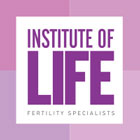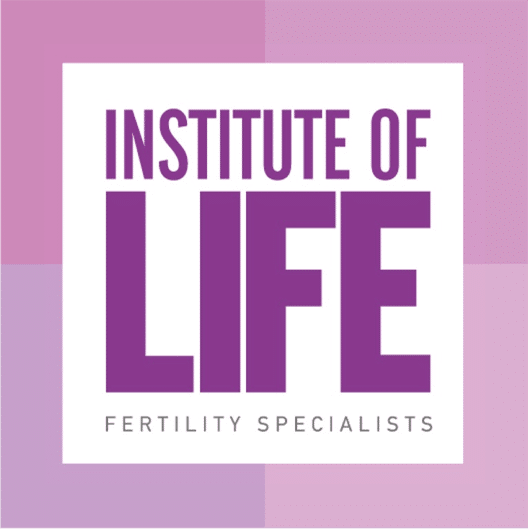Causes of female infertility

Female infertility investigation looks into the possibility of a woman having a child which is undoubtedly one of the desires or even a life dream for most couples.
Female infertility investigation
Female infertility investigation looks into the possibility of a woman having a child which is undoubtedly one of the desires or even a life dream for most couples. However, in Greece, 1 in 6 couples is faced with infertility problems, meaning it is unable to conceive despite having frequent unprotected intercourse for at least a year.
In 1/3 of the cases, infertility is due to the woman, in 1/3 to the man and in the rest to unexplained causes or problems is both aspiring parents.
Ovulation Disorders
The ovaries must produce and release eggs for pregnancy to be achieved. Furthermore, the presence of unobstructed fallopian tubes and a normal uterus are necessary, since pregnancy needs a healthy environment to progress.
The complex human reproduction process involves the following steps:
- 1 of the 2 ovaries releases a mature egg.
- The egg then moves to the fallopian tube.
- Sperm swims through the fallopian tubes to reach the egg and fertilize it.
- The fertilized egg then travels towards the womb through the fallopian tube, where it eventually is implanted and develops.
Many factors may disrupt this process at any stage.
Polycystic Ovary Syndrome (PCOS)
During polycystic ovary syndrome, the hormonal balance is disrupted and ovulation is absent or rare. The ovaries are enlarged and contain many small cysts (ovarian follicles that have not reached ovulation and are in remission). Polycystic ovary syndrome is linked to insulin resistance, obesity, hair growth on face or body, and acne. It is the most common cause of female infertility.
Hypothalamic Dysfunction
Two hormones that are responsible for stimulating ovulation every month – follicle-stimulating hormone (FSH) and luteinizing hormone (LH) – are produced by the pituitary gland in a specific pattern during the menstrual cycle. Excess physical or emotional pressure, very high or very low body weight, or significant recent weight loss or gain may cause disruption of this pattern and affect ovulation. A main indication of this problem is irregular or absent period.
In some women with severe polycystic ovary syndrome, the pituitary gland may cause excess prolactin production (hyperprolactinemia), which reduces the production of estrogens and may cause infertility. This is most commonly due to the development of swelling in the pituitary gland (adenoma), but it may also be linked to intake of medication for another disease.
Premature Ovarian Failure
Premature ovarian failure is usually caused by an autoimmune reaction, whereby the body wrongly attacks the ovarian tissue. It may also be caused by premature ovarian function impairment due to chromosomal problems, such as mosaicism, Turner syndrome and fragile X syndrome. Additionally, chemotherapy or radiotherapy in the area of the pelvis often leads to ovarian failure.
Other factors that have a toxic effect on the ovaries include:
- Autoimmune diseases, such as autoimmune thyroid disease, type 1 diabetes mellitus, systemic lupus erythematosus, myasthenia gravis, etc.
- Various toxic substances consumed with food, such as exogenous hormones used in farming and pesticides (organophosphates), which are metabolized into estrogens in the human body, toxic substances in various cosmetics, such as aluminum, etc.
- Special mention should be made to the women’s lifestyle is large cities. Irregular sleeping and eating times, smoking, alcohol consumption, work stress and later on relatively advanced age to start a family are the recipe for failure for those wishing to get pregnant.
Fallopian Tube Problems
Any fallopian tube disorders may result in infertility problems, as sperm may not be able to reach and fertilize the egg or the fertilized egg may not be able to be transferred to and then attach itself to the womb.
The factors affecting the fallopian tubes and creating problems may be:
- Fallopian tube infections, mainly chlamydia
- Previous genital or abdominal surgery
- Ectopic pregnancies
- Endometriosis
Endometriosis
Endometriosis is a common gynecological problem. In women with endometriosis, the endometrial tissue that normally lines the interior of the uterus also develops in areas beyond the uterus, such as:
- Over and inside the ovaries
- Behind the uterus, over the ligaments that keep the uterus in place
- In the peritoneum that lines the abdominal walls and organs
- The intestine, bladder, rectum or diaphragm, but rarely
There are many theories as to the causes of endometriosis. According to the most prevalent, it is the immune response of the body against the minimal endometrial tissue that flows into the abdomen via the fallopian tube during menstruation. This explains the increased rates of endometriosis in women with other autoimmune diseases. Based on another theory, the remnants of primitive embryonic tissue, from when the woman wan an embryo, may later develop into endometriosis.
Uterine and Cervical Problems
Several uterine and cervical problems may affect fertility, intervening with the egg implantation or increasing the likelihood of a miscarriage:
- Benign polyps or tumors (fibroids) often affect fertility, blocking the fallopian tubes or disrupting implantation. However, many women with fibroids or polyps manage to get pregnant. The size and mainly the position of these are very important.
- An inflammation in the interior of the uterus may lead to scars (adhesions) and dysfunctional endometrium, which disrupt implantation.
- Genetic disorders of the uterus, such as abnormal shape.
- Cervical stenosis, which may be caused by inherited dysplasia, or damage to the area during surgery may result in failure to produce mucus, which allows the sperm to travel to the uterus via the cervix.
Age
The age of the prospective mother is undoubtedly a significant fertility factor. The relative likelihood of natural conception per cycle is 25% for women up to 30 years, drops to 18% at 35 years and is close to 12% at 38 years. After that age, the rates are in single digits.
Other infertility factors
Smoking, excess weight or anorexia, anxiety, increased stress and fatigue, as well as health problems, such as diabetes, are some to the factors that may cause infertility.
Unexplained infertility
In some cases, the cause of infertility may not be clearly defined. It may be a combination of several factors of lesser significance that may cause problems, which, in some cases, may be resolved over time.
Relevant Topics
-
Tests for women
Necessary tests for female infertility If pregnancy has not been achieved within a reasonable time of unprotected intercourse, a...
-
Causes of female infertility
Causes of female infertility Female infertility investigation looks into the possibility of a woman having a child which...
-
Male Infertility
All the newest studies reveal that 50% of infertility problems are linked to the male factor, a rate that...










